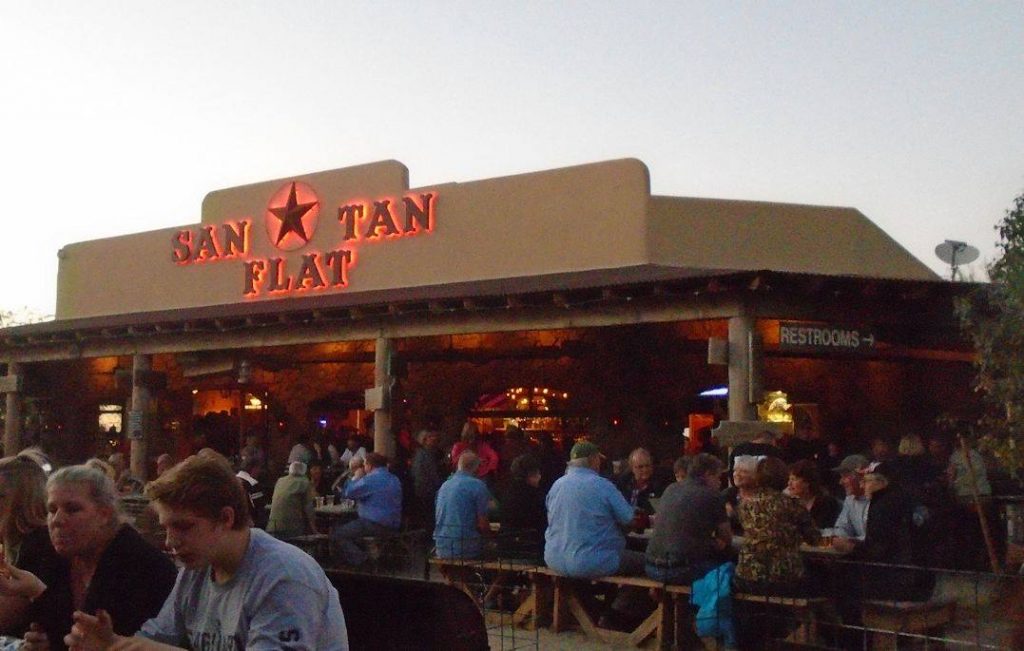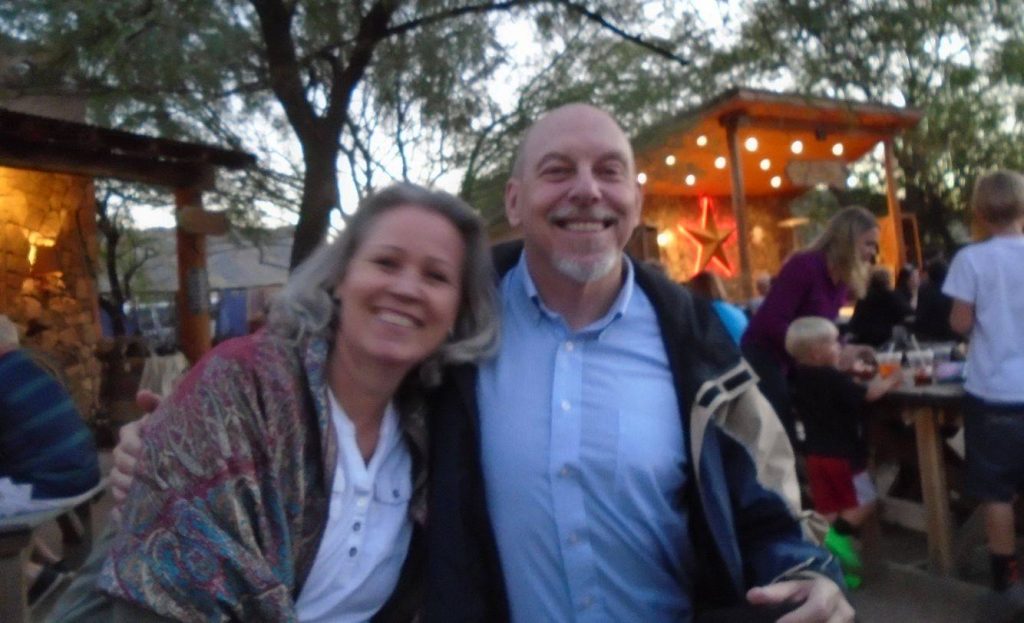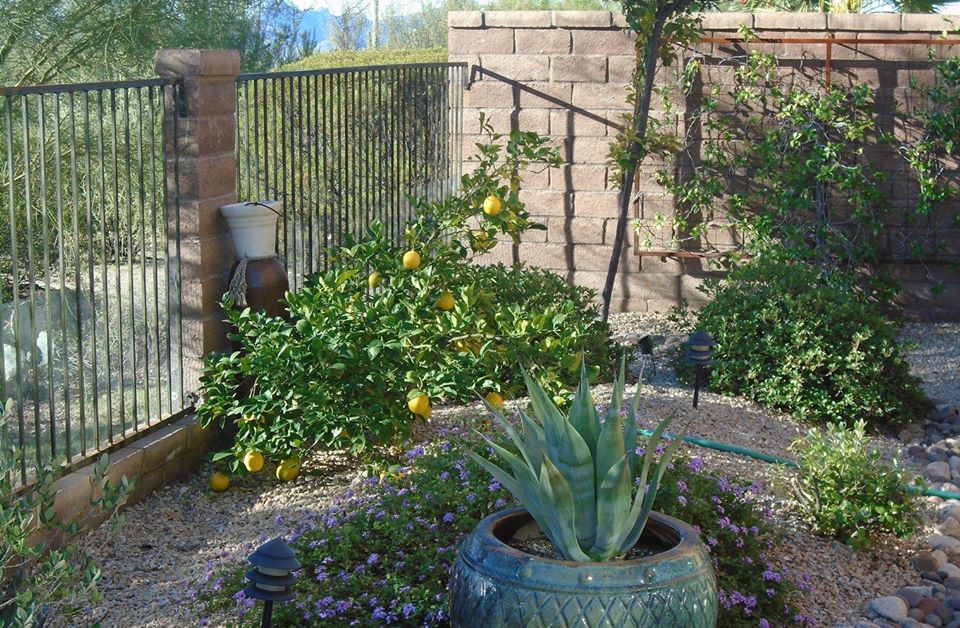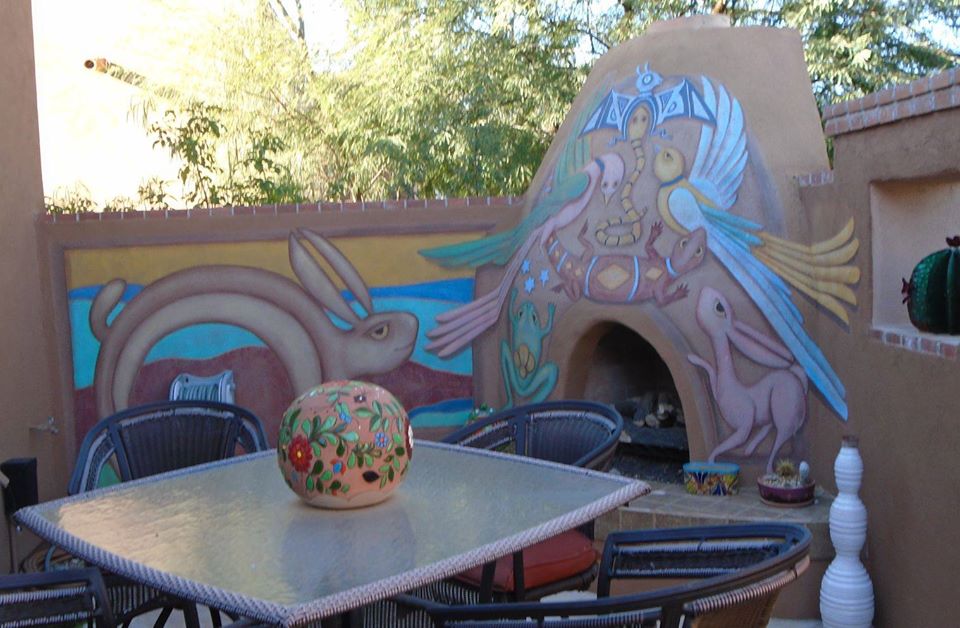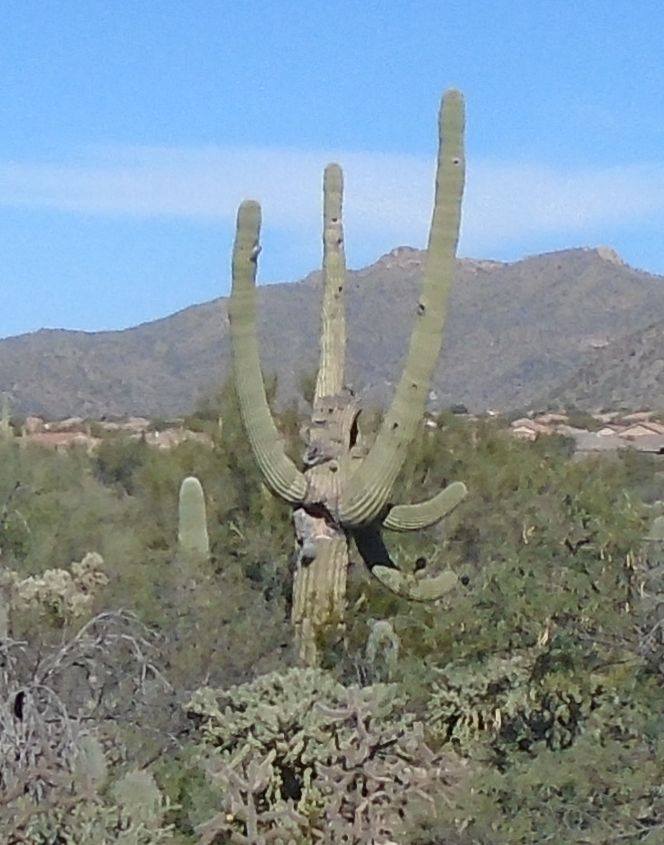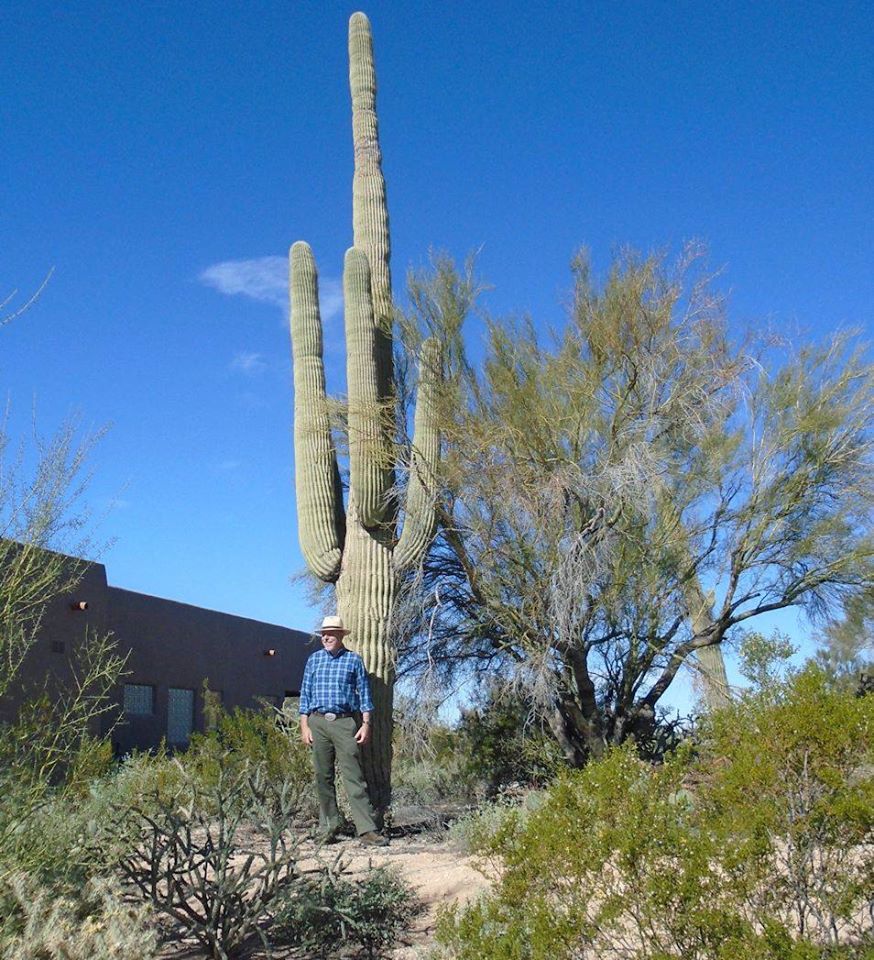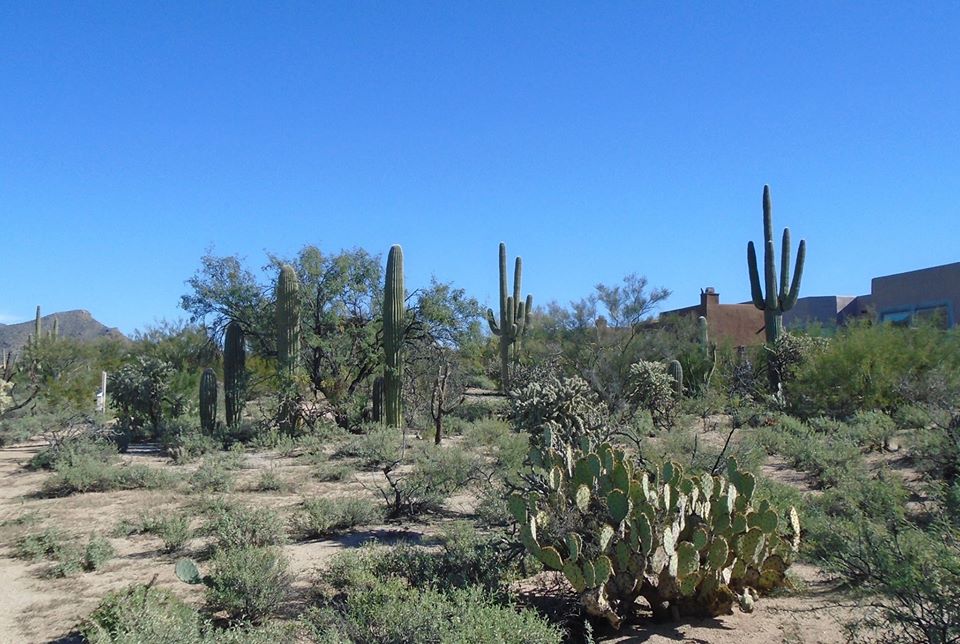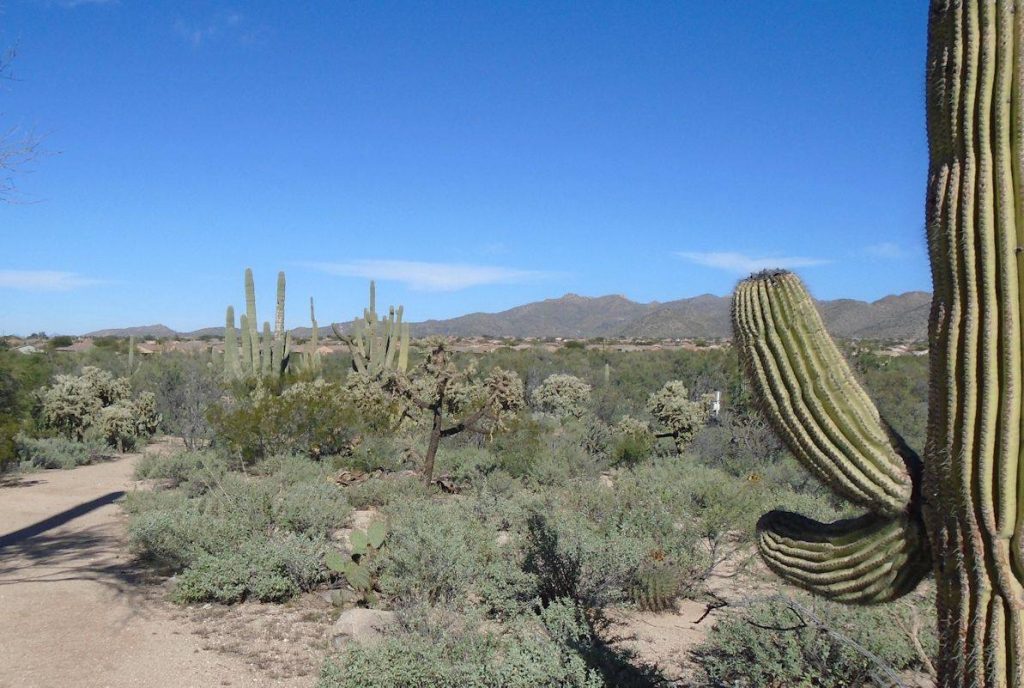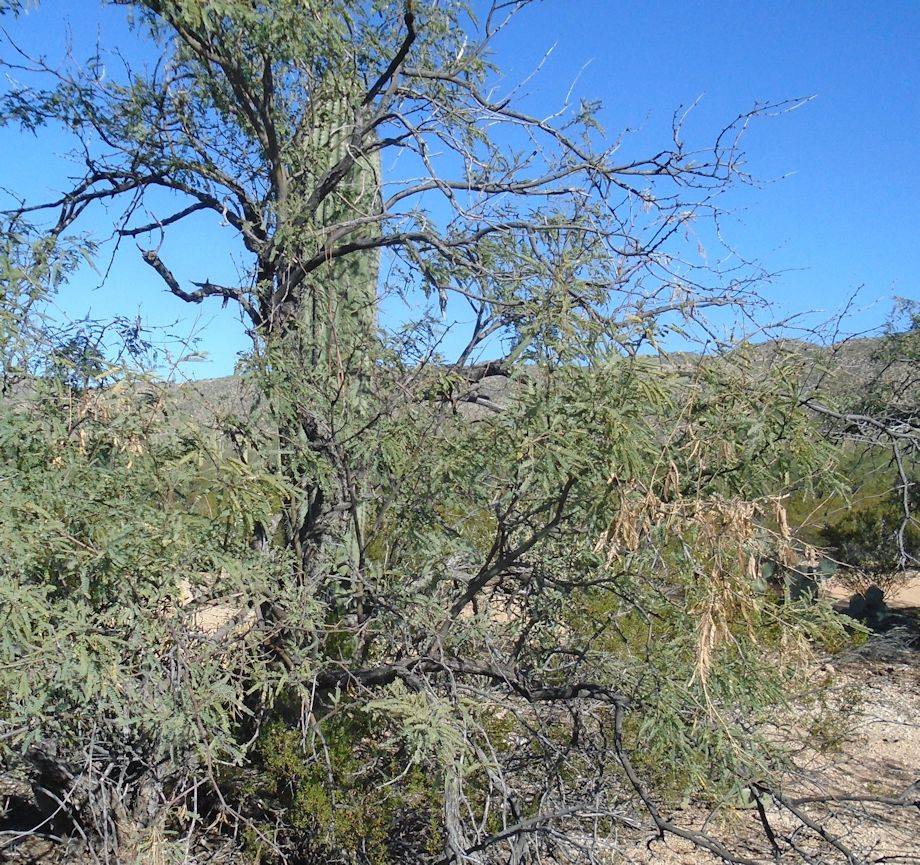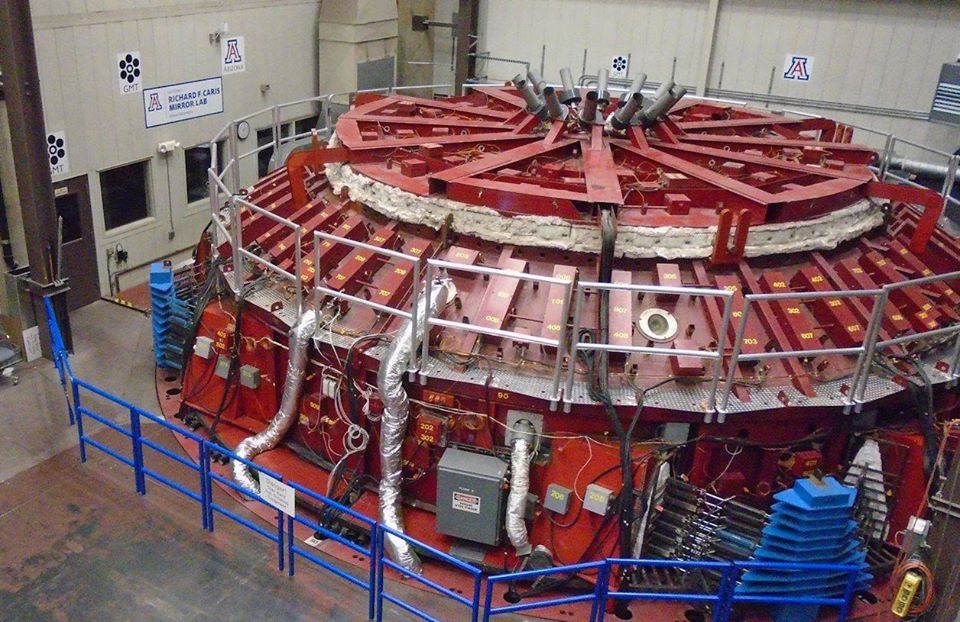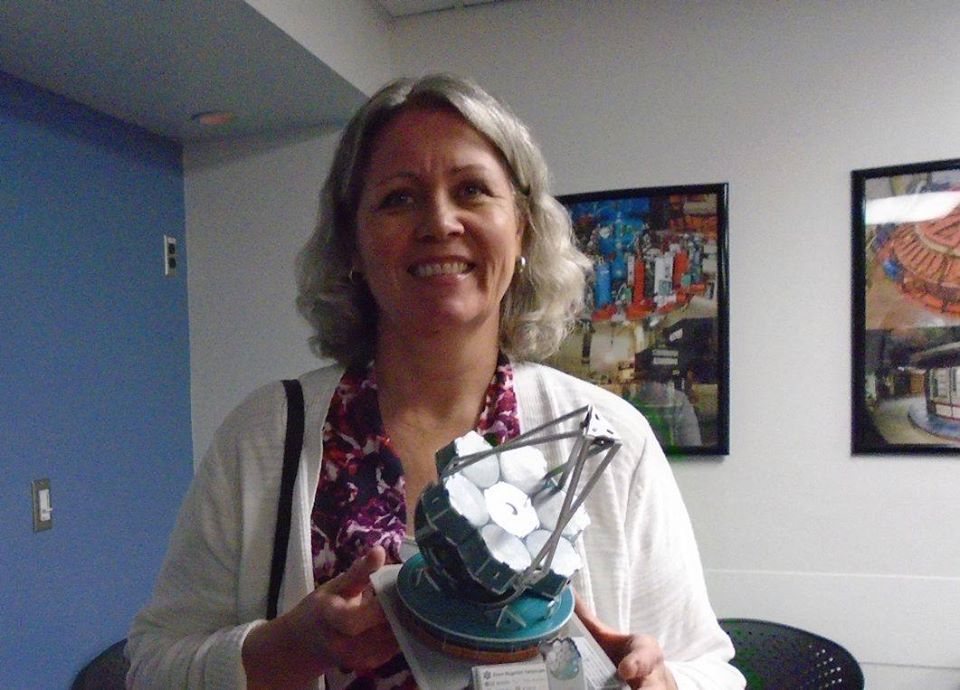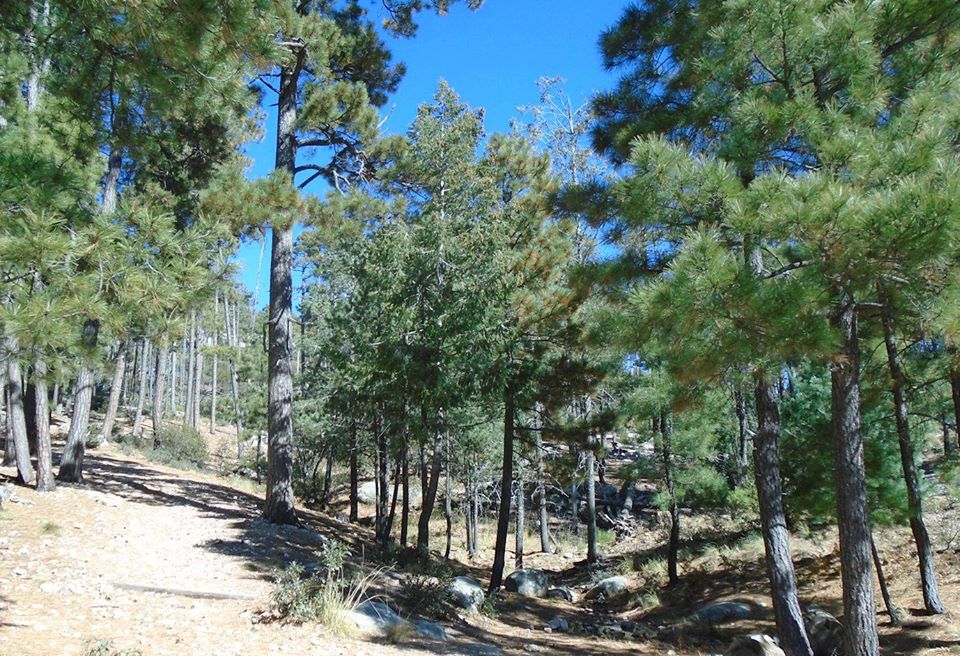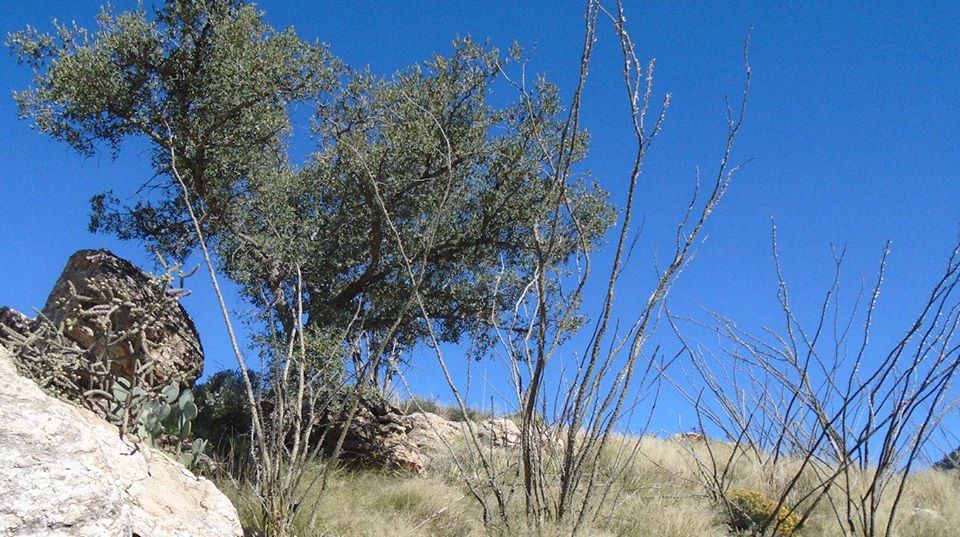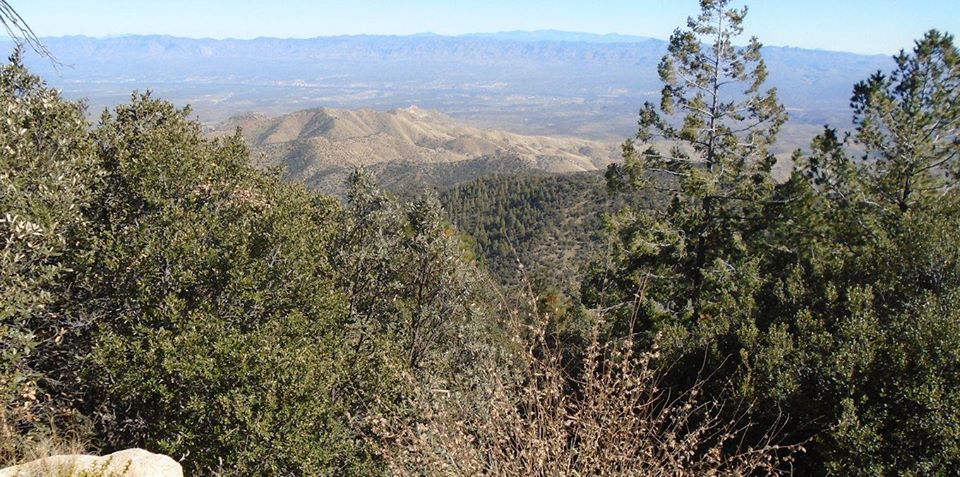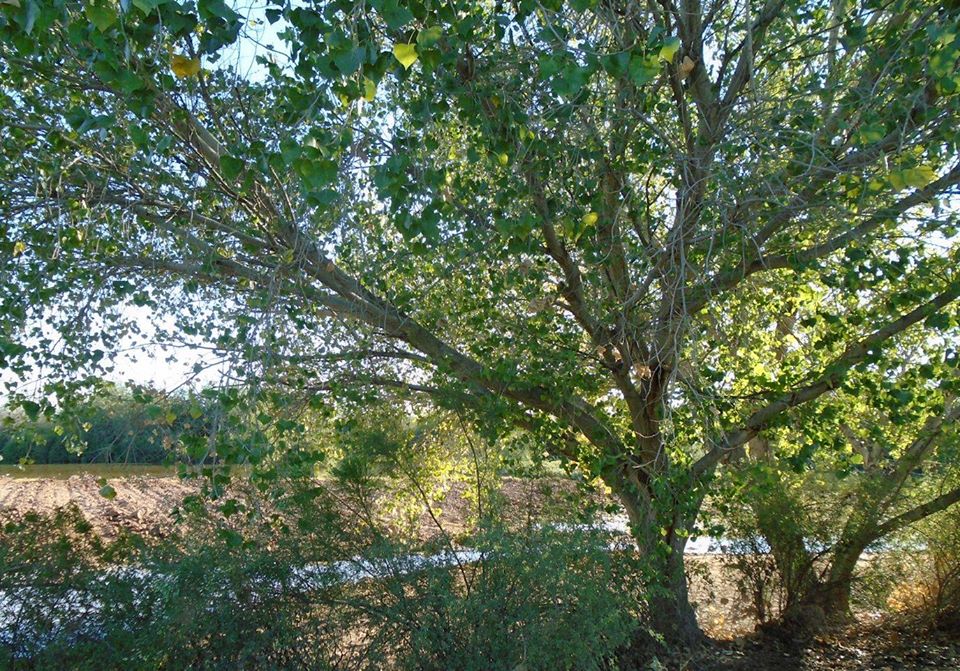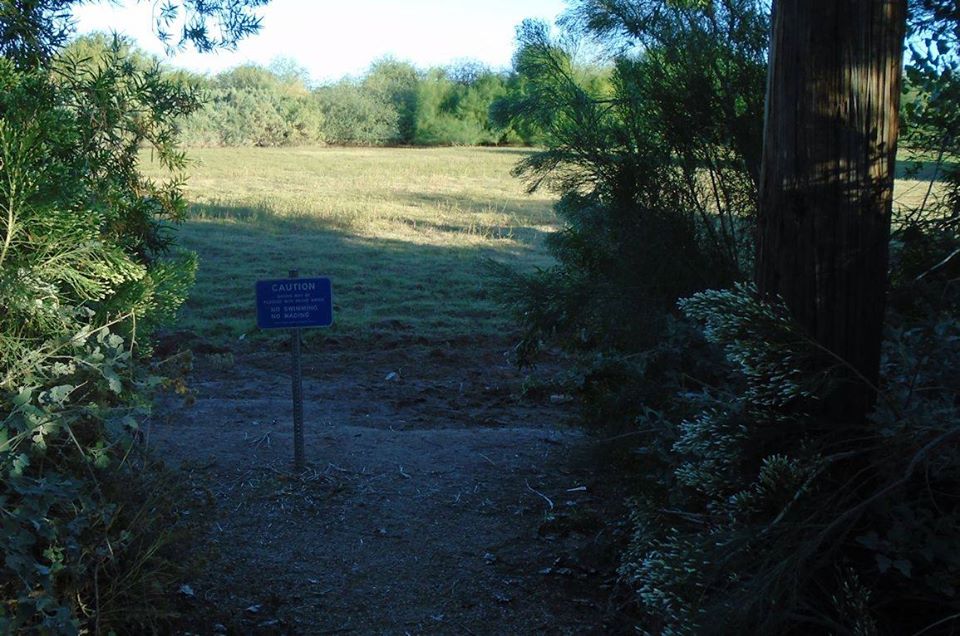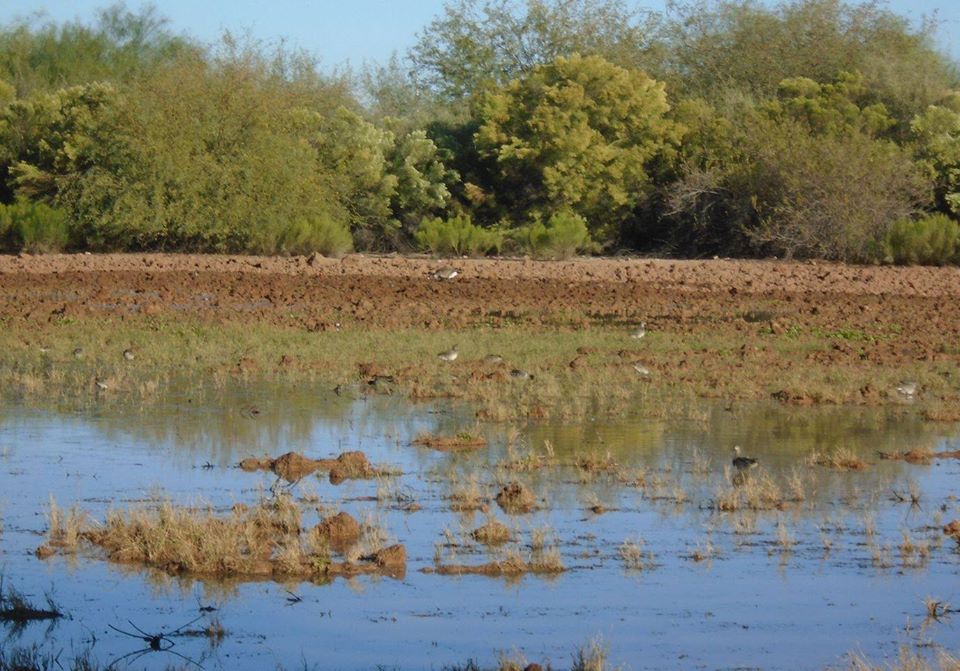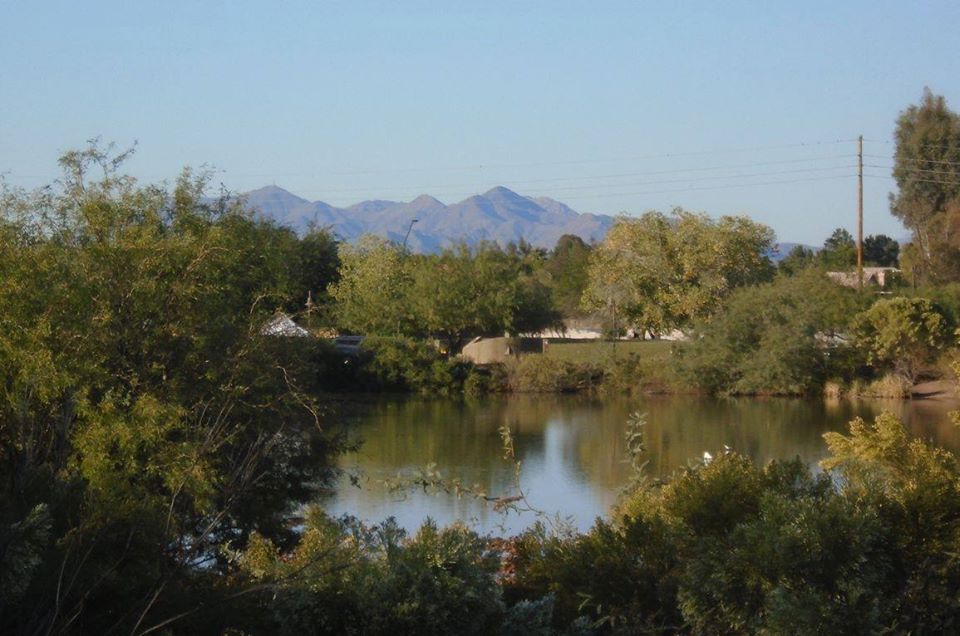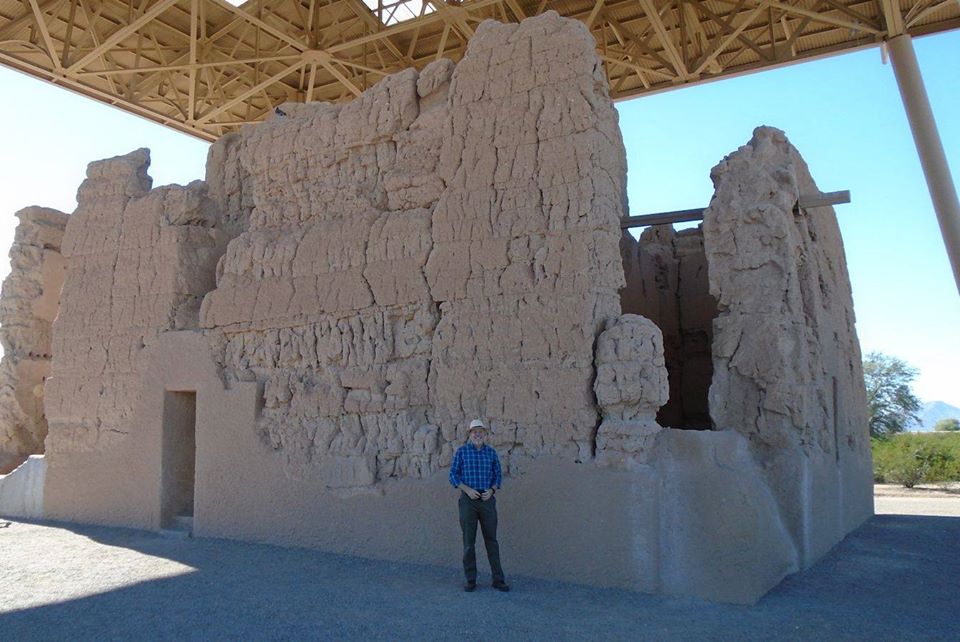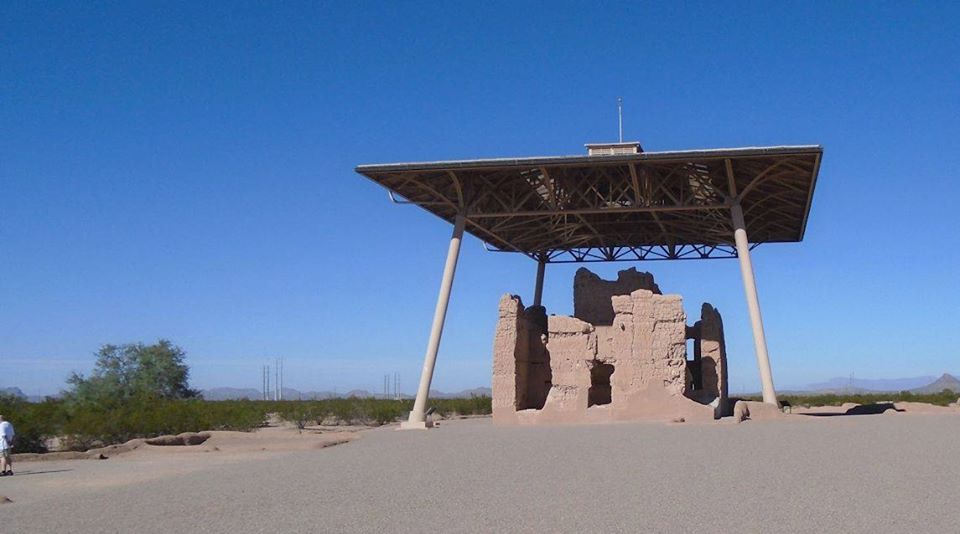Weather in Arizona was very much like weather in Virginia at the same time. It rained – pretty hard – as we left Phoenix. The night before, we had supper at San Tan Flats. It was a very 1970s type place, reminded me of my college days parties. Just add 50 years to the party goers.
Cousin Elise and Carl have a very artistic house.
Cousin Elise and Carl have a very artistic house.
Measure of a cactus
We stayed with cousin Elise and Carl at their house at Dove Mountain. It is a well planned development with natural areas preserved among the homes. I like the idea of mixing humans and nature. It is good for the human soul & allows for the sustainable preservation of nature when done correctly. The pictures are from the natural areas near their house.
You see my picture with the cactus. Carl saw my picture with my pine trees and liked the idea of the comparison. I have become a unit of measurement. This saguaro looks to be about five matels high.
Saguaros
It is hard for me to accept that there can be a mature forest that does not provide shade, but the saguaros qualify as forest and let most of the sun get to the ground. Saguaros are remarkable organisms. They grow slowly and can reach an age of 200. They grow only in the Sonoran Desert and are well adapted to the limited & seasonal rainfall. They soak up water when they can and save it for the dry times which always follow.
The saguaros take a long time to get established. They often grow under the shelter of mesquites or palo verde trees. Later they return the favor by soaking up much of the water and out competing the nursery trees.
Giant Magallan Telescope
Chrissy, Carl Hankwitz & I went to the Mirror Lab at University of Arizona. Arizona is the leading school for optics in the U.S. The Mirror Lab is making mirrors for the Giant Magellan Telescope (GMT).
GMT will be ten times as powerful than Hubble. The problem of looking through earth atmosphere has been addressed with adaptive optics. As the guide said, adaptive optics takes the twinkle out of the stars.
GMT will be assembled in the desert in Chile, which is driest place on earth, so the dry air and lack of clouds will make the telescope even better. GMT is expected to see to the edge of the known universe, as far as only 300 million years after the big bang. More information about the universe will be available in the next decades than in all the previous centuries. The challenge is too MUCH information. Astronomers are developing algorithms to help decide where to look.
Science seems to have a half life of around 25 years. Lots of what we thought we knew turns out to be at least partially wrong. The Hubble was the best and was the ultimate in telescopes. Now we will have one ten times better and this is probably not the end of the line.
The pictures show Chrissy with a model of the GMT. The next is a giant furnace. It melts glass into molds that look like honeycombs. The furnace rotates and forms the lens into a parabola for a mirror that focuses light above the array. The last picture is a polisher, that smooths the lens.
Different biomes
One of the few places where you can drive from Mexico to Canada in about a half hour is Mount Lemmon near Tucson, at least you can pass through the biomes on your way up. As you make the vertical climb, you move from the Sonora Desert environment, through mixed woodland and ponderosa pine and finally get to a mixed pine-fir forest near the top. On the first picture you can see the various biomes lined up
The temperature at the bottom was a comfortable 65 degrees. At the top is was 37 degrees. Chrissy and I rented a convertible so that we could see and feel all the differences on the way and and we kept the top down, admittedly with the heater on, all the way up.
David and Gladys Wright house in Phoenix

Frank Lloyd Wright had lots of good ideas but most didn’t work well. The irony is that he claimed to want to build houses for the common man and used inexpensive materials to do so, but demanded everything be essentially custom made, thereby making it impossible for the common man to afford his houses.

We went to visit the David and Gladys Wright house in Phoenix. It is beautiful to look at, but uncomfortable to live in. Frank Lloyd Wright has a few trademarks, some he wanted; others just happened. Among the unintended bugs were roofs and windows that usually leaked. The unique materials and angles made that likely. You can see the leak damage in my third picture below. Notice also that none of the boards are the same size. Each had to be custom cut and fitted. Built in furniture and indirect lighting were features, not bugs. They made it hard to read or sit comfortably, as Wright did not want to allow furniture to be moved or lamps employed. You were supposed to live in the house the way Frank Lloyd Wright designed you to live in it.

Chrissy likes the look of Frank Lloyd Wright buildings and I do too. They are beautiful, like big works of art. But I think that a house should not be a work of art. It should be a home and be changeable depending on the needs of the current occupants, and it should be reasonably easy to maintain. I suppose you can apply the general axiom to FLW homes. They are nice places to visit, but you wouldn’t want to live there.
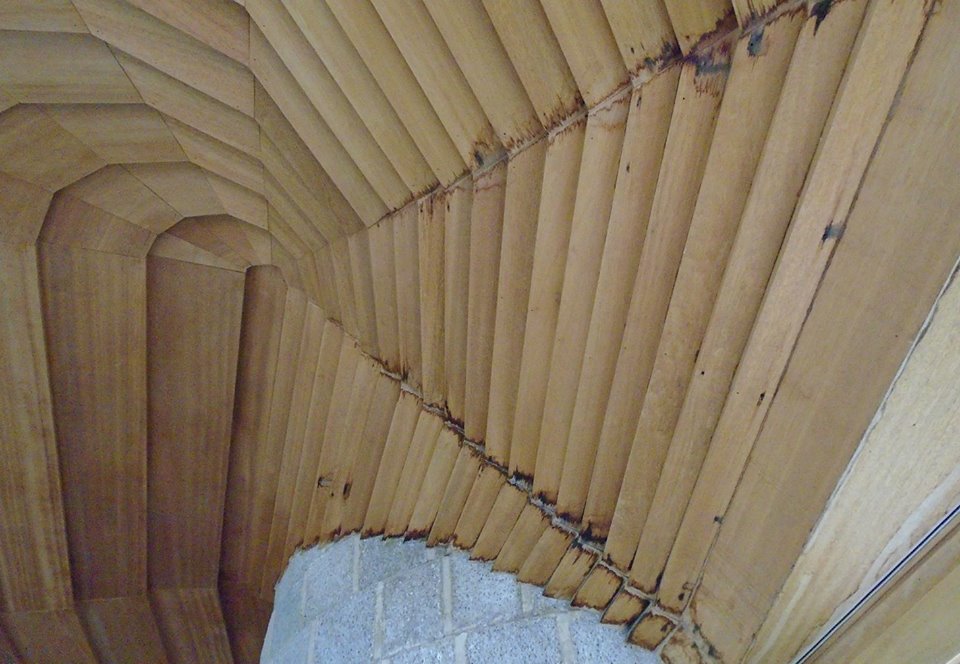
The Riparian Preserve in Gilbert, Arizona
The Riparian Preserve in Gilbert, Arizona was set up as a place to protect wildlife, but also – and maybe more importantly – to recharge local aquifers. Several shallow ponds are flooded to give treated wastewater and occasional runoff a chance to soak into the ground. Various ponds are occasionally drained and plowed so that the surfaces do not become too impervious to the water. It is a nice, green and peaceful area very popular with local residents as a place to walk and see animals.
Casa Grande
Visited Casa Grande, the oldest national archeologically park in the U.S. The people her practiced irrigated agriculture, using water from the Gila River. It was evidently a fairly prosperous community, with a population perhaps as much as 20,000, but was not sustainable. The civilization crashed around 1450 and the people dispersed. Local oral tradition blames war. More modern interpretation indicates climate change as a factor. The explanations are not mutually exclusive.
The Spanish discovered the ruins in 1694 and called it Casa Grande, or big house. Archaeologists are still studying the ruins. Some they leave buried in anticipation of better techniques in future.
The structures are not very big by modern standards, but consider that the buildings and irrigation systems were constructed using stone tools and sticks and w/o even the use of draft animals.
Ira Hayes
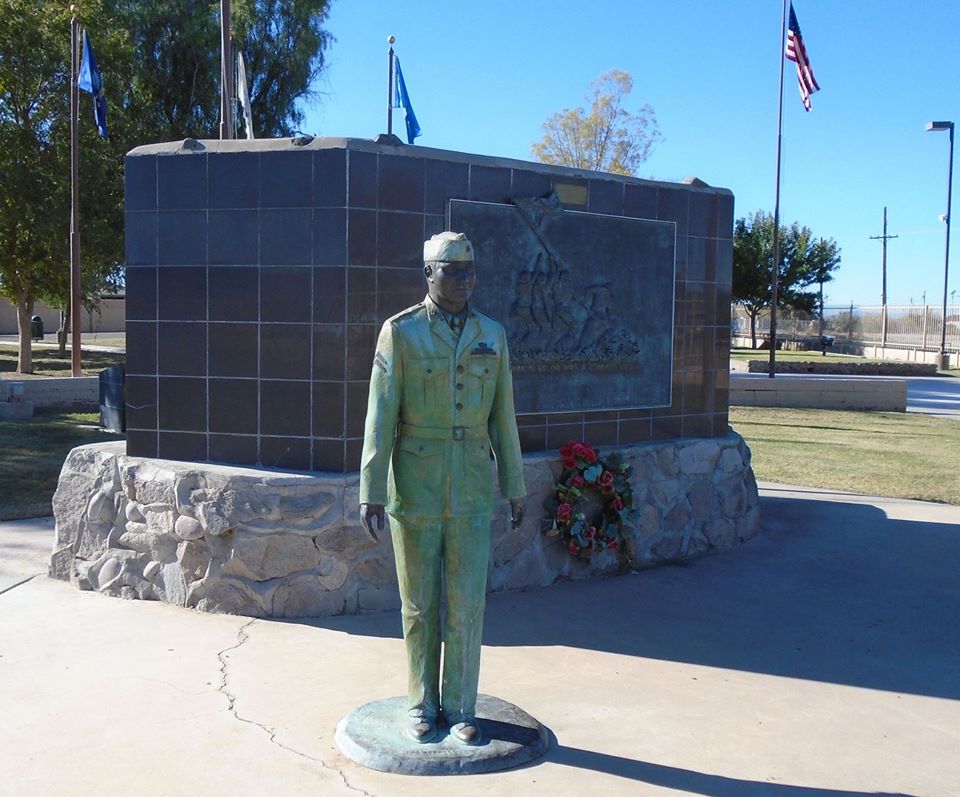
We went to the memorial in Sacaton, Arizona honoring Ira H. Hayes and Mathew B. Juan. Ira Hayes was one of the Marines who raised the flag on Iwo Jimi. Mathew Juan was the first Arizonian to be killed in World War I. They were both members of the Pima Tribe of Arizona.


